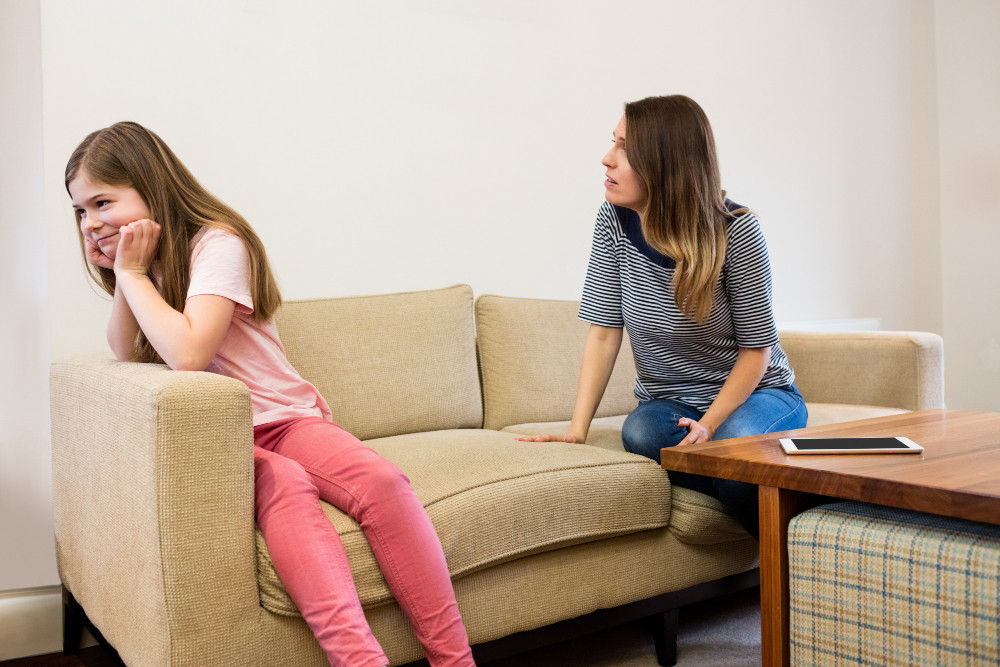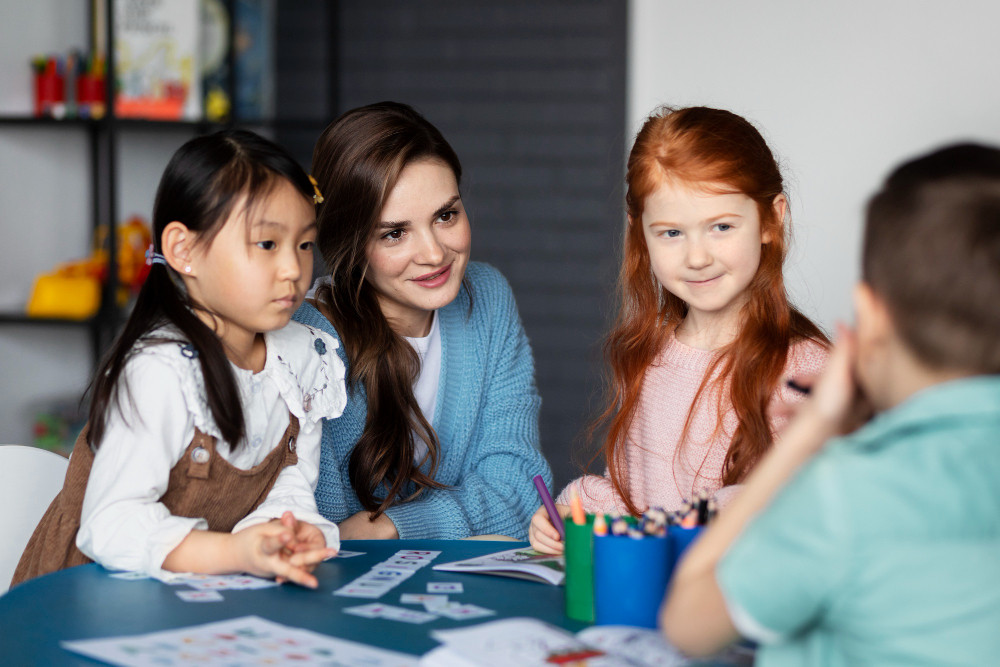
Why Yelling Doesn’t Work: How Calm Parenting Builds Confidence and Emotional Strength in Children
Introduction: A Moment Every Parent Regrets
We’ve all been there.
Your child spills juice for the third time, talks back, or throws a tantrum in public — and before you even realize it, the frustration takes over. Your voice rises. You yell. And then it hits you... that wave of guilt. You didn’t want to react that way. You just didn’t know how else to handle the moment.
If this sounds familiar, you’re far from alone. Most parents don’t want to yell — they just feel overwhelmed, unheard, or unsure of what else to do. And while it may feel like yelling “works” in the moment, research shows it often causes more harm than good in the long run.
The truth is: how we respond to our children’s behavior shapes their brain, their emotional development, and their self-worth. Yelling may stop a behavior temporarily, but it doesn’t teach better choices. What does? Calm, connected parenting — even in tough moments.
Let’s explore what really happens inside a child when we yell, and why calm responses have the power to build stronger, more emotionally resilient kids.
1. What Happens in a Child’s Brain When We Yell
To a child, a parent’s voice is everything. It’s their guide, their safety net, their world.
When that voice turns harsh or angry, especially when it’s frequent, it doesn’t just hurt feelings — it can literally change the way their brain processes emotion and stress. The brain, especially in young children, is incredibly sensitive to tone, body language, and energy.
When a child is yelled at, their brain activates the “fight or flight” response. The amygdala — the brain’s fear center — kicks in, releasing stress hormones like cortisol. This may help the child “comply” in that moment, but repeated exposure can lead to chronic stress, anxiety, difficulty regulating emotions, and even aggression.
Instead of learning, the child shuts down or becomes defensive. Instead of feeling safe, they feel shamed. And instead of building confidence, they start doubting themselves.
Over time, this can impact:
• How they see themselves (“I’m always wrong”)
• How they handle mistakes (“I better hide it or lie”)
• How they react to authority or future relationships
It’s not about being perfect. It’s about recognizing that our tone, words, and energy matter — not just in the moment, but in how our child’s brain develops over time.
2. Why Kids Don’t Learn Well Through Fear
One of the biggest myths in parenting is that fear leads to discipline. In reality, fear leads to silence, shame, or rebellion — not understanding.
When a child is afraid of being yelled at, they may stop a behavior, but not because they understand why it was wrong. They simply want to avoid punishment or emotional pain. That’s not learning — that’s survival.
Fear-based parenting often leads to:
• Children hiding mistakes instead of owning them
• Lying to avoid being yelled at
• Resentment building over time
• An emotional distance between parent and child
What children need isn’t fear — it’s guidance, connection, and consistent boundaries delivered with calm and respect. Kids learn best when they feel emotionally safe. When they’re not worried about being yelled at, they’re more open to conversation, correction, and reflection.
A calm approach says: “You’re safe with me, even when you mess up. Let’s learn from this.” And that’s the kind of parenting that builds children who are thoughtful, confident, and emotionally strong — not just obedient.
3. The Power of Calm Responses
Staying calm when your child is testing every ounce of your patience might feel impossible. But those are the exact moments when your calm response becomes the most powerful teaching tool.
Children learn emotional regulation by watching how we manage ours. When a parent reacts with shouting or frustration, the child absorbs that behavior as “normal.” But when we respond with steady, calm energy — even when we’re correcting them — they learn how to manage their own big feelings, too.
Here’s what calm parenting actually teaches:
• That it’s okay to make mistakes
• That problems can be solved with conversation, not conflict
• That they are still loved, even when corrected
• That emotions are valid, but they don’t have to control us
For example, imagine your child spills cereal all over the kitchen floor. Yelling might make them cry or scramble to hide it. But calmly saying, “Oops, that made a mess. Let’s clean it together,” helps the child shift from shame to responsibility. It also makes them feel capable — not clumsy or “bad.”
Calm parenting isn’t about letting things slide. It’s about modeling emotional strength and making space for growth. Your child won’t remember every rule — but they will remember how you made them feel in the tough moments.
4. How Calm Parenting Builds a Strong Bond
At its core, parenting is about connection. And that connection grows strongest not in perfect moments, but in how we handle imperfection.
When a child knows that their parent won’t explode when they make a mistake, they feel safer opening up. They come to you with problems instead of hiding them. They feel emotionally protected, not judged. Over time, this builds a deep foundation of trust and emotional intimacy.
Here’s how calm parenting strengthens the bond:
• It creates open communication, where the child feels heard
• It nurtures mutual respect, rather than fear-based obedience
• It deepens empathy, as children start to understand how their actions affect others
A calm household doesn’t mean a quiet one — it means one where feelings are allowed, conversations happen, and mistakes lead to learning, not punishment. That’s how you raise a child who values relationships — because they grew up in one that was built on trust.
And when your child becomes a teen or young adult, it’s that bond — not fear — that keeps them close and guides their choices.
5. What to Do Instead of Yelling
Let’s be honest — staying calm isn’t always easy. Especially when you’re running on little sleep, dealing with work stress, or just feeling overwhelmed. But there are simple strategies you can start using right away to respond instead of react.
Here are a few real-life tools to help break the yelling cycle:
• Pause Before You Speak: Take a breath. Count to five. Step into another room if you must. A pause can completely change the tone of your response.
•Use Fewer Words: Keep it simple and firm. Instead of lecturing or raising your voice, say something like, “We don’t throw toys. Let’s take a break.” Calm and clear.
• Get Down to Their Level: Eye contact, gentle tone, and physical closeness help your child feel seen and understood — even in conflict.
• Offer Choices: Empower your child with options. “You can either pick up the toys now or after dinner. What works for you?”
• Talk Later, Not in the Heat of the Moment: Address deeper lessons once emotions settle. That’s when children are truly ready to listen and reflect.
You don’t have to get it perfect every time. You’re human. The goal isn’t perfection — it’s progress. Every time you choose calm over chaos, you’re rewiring not just your child’s brain, but your own parenting habits too.
6. Final Thoughts: You're Not Failing, You're Learning Too
Parenting isn’t a straight path. It’s a daily journey filled with high-pressure moments, messy emotions, and more curveballs than anyone prepares you for. If you’ve yelled at your child before — welcome to the club. You’re human.
But here’s what matters most: You care enough to want to do better. That awareness? That intention? That’s powerful.
Calm parenting doesn’t mean you won’t ever lose your cool. It means that over time, you become more mindful of your reactions and more in control of your own emotional responses. It means that instead of just correcting behavior, you’re nurturing emotional growth — for your child and for yourself.
Your child doesn’t need a perfect parent. They need a present one. One who says, “I got angry earlier, and I’m sorry.” One who models repair, empathy, and patience — not just rules and consequences.
The truth is, when you focus on responding with calm, you’re not just managing behavior — you’re raising a person. A whole human being who learns, through you, how to face challenges, how to love, and how to feel safe in their own skin.
And that, more than anything, is what lasting parenting success looks like.
7. Quick Reminders for When You Feel Like Yelling
Even the calmest parents have moments where stress boils over. Keep these reminders close — on your fridge, your phone, or even in your mind — to guide you back to calm when it counts.
Breathe before you speak. Your brain needs oxygen to regulate emotion. So does your child’s.
It’s not personal. Your child isn’t trying to ruin your day — they’re still learning how to handle theirs.
Say less. Connect more. Fewer words, more empathy. Connection leads to cooperation.
Take a pause, not a punishment. Step away if needed — it’s better than words you can’t take back.
Repair is powerful. If you yell, own it. Apologize. Model the behavior you want to see.
Final Encouragement
If you’re trying to parent with more calm, more understanding, and more emotional connection — you’re already doing something beautiful.
You’re breaking cycles. You’re growing alongside your child. And you’re giving them the kind of emotional foundation that lasts a lifetime.







